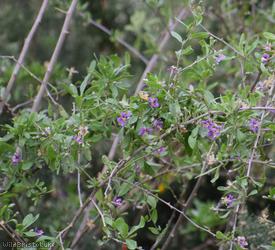Duke of Argyll's Teaplant - lycium barbarum
Favourite Photos
| image | species | author | location | uploaded | taken | select |
|---|---|---|---|---|---|---|
 |
Duke of Argyll's Teaplant - lycium barbarum | dylan | South Gloucester | 25 Sep 2023, 12:48 a.m. | 24 Sep 2023, 5:46 p.m. |
Species Description
Widespread and fairly frequent throughout the South, becoming limited to coastlines in the North. Habitat includes: Rough places often by the sea in places such as hedge banks, scrub, old walls, allotments, shingle, wasteland etc. Growing habit: Deciduous, suckering, spiny Perennial. Height: Up to 3 m. Flowers: June to September. The seeds are often spread by birds. Introduced to Britain before 1696 and recorded from the wild since 1848. Other names include: Chinese Wolfberry, Barbary Matrimony Vine, Red Medlar, Matrimony Vine, Duke of Argyll's Tea-tree, Goji Berry.
Stace 4:
lycium barbarum L. (L. halmifolium Mill.) - Duke of Argyll's Teaplant.
Scrambling shrub to 3m; leaves elliptic to narrowly so, widest near middle, 2-10cm; calyx about 3-5mm; corolla purplish, mostly <17mm across, divided to <about 1/2 way to base of tube; corolla-lobes usually not or sparsely minutely ciliate, each with 3 dark veins scarcely branching; berry bright red, ellipsoid, 10-20mm; (2n=24). Neophyte-naturalised; grown as hedging and naturalised in rough ground, hedges and on walls; scattered throughout British Isles, mainly England; China.
Useful Links:
Online Atlas of the British and Irish Flora